While we all like to think we understand every road sign we see, there are some confusing road signs that have us perplexed
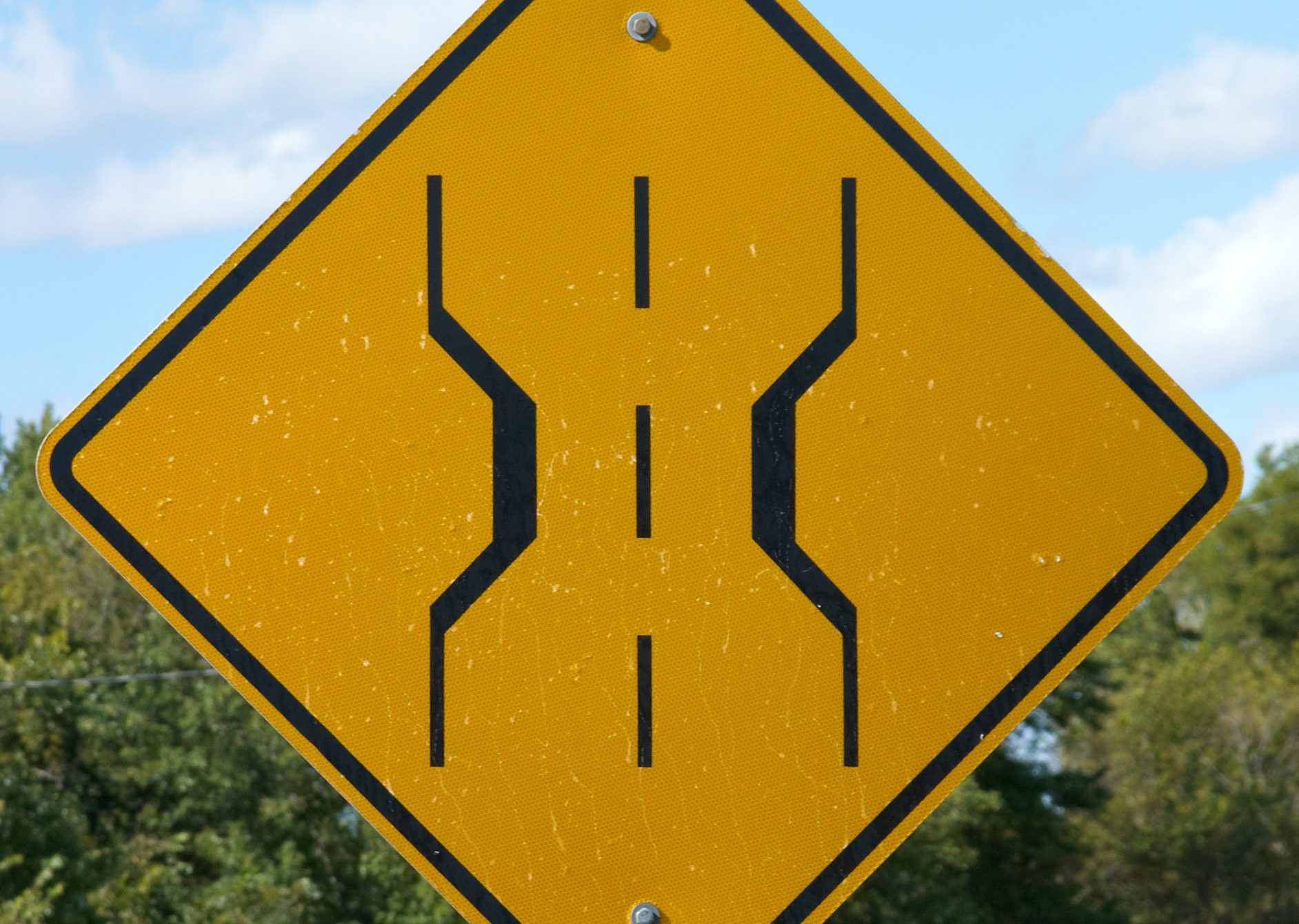
8 Confusing Road Signs That Even Driving School Instructors Get Wrong

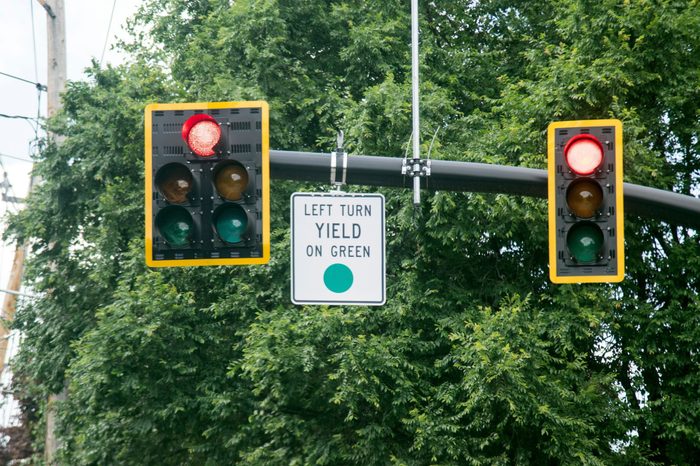
Left Turn Yield on Green
Surprisingly, green does not always mean go, and this is a subtle driving mistake many people make. According to John Svensson, former president of the Driving School Association of the Americas, “a solid green does not mean go. It means you may proceed only if safe to do so.” You might see this sign at a busy intersection, especially one with multiple lanes of traffic between you and your left turn, where even if you have a green light, you cannot enter the intersection until those lanes are clear. “The most fundamental misconception is that laws give the right of way to one driver over another,” Svensson says. “It is incumbent on every driver to make certain that the driver required to give up the right of way is indeed doing so and proceed only when safe.” So, just because the other person isn’t supposed to be going doesn’t mean you are.

Soft Shoulder
This sign is actually one of three different signs that indicate an atypical circumstance about the road’s shoulder: either no shoulder, a low shoulder or a soft shoulder. In this case, soft shoulder means the terrain is a bit more malleable than usual, which can sometimes happen at the end of winter or just after construction, and is potentially precarious if your vehicle isn’t suited for those conditions.
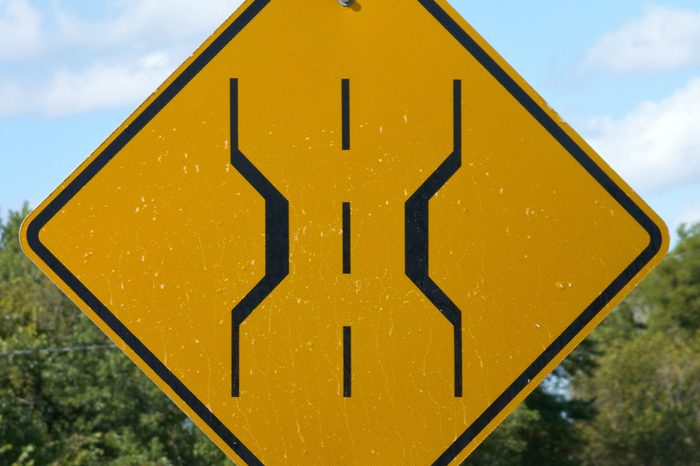
Narrow Bridge
It’s always good to brush up on safe driving tips for scary driving situations. The Manual on Uniform Traffic Control Devices (MUTCD) states that this sign is a warning that you’re approaching a bridge with less width than the road preceding it, and you’ll just want to make sure you can still clear it, especially if you’re operating a larger vehicle.

Flagger Ahead
If you saw this sign on a driving test, could you get it right? This sign means that a lane of traffic had to be shut down, likely due to construction, and a flagger with a STOP and SLOW paddle is controlling when cars can go through.

Inherently Low Emission Vehicles Allowed
This very no-nonsense sign is confusing because it is a lot of large words to process in the brief amount of time that you can safely look at it. Hopefully, this explanation will help you recognize and speed-read this sign on sight. Per the MUTCD, it means Inherently Low Emission Vehicles (ILEVs) are allowed to use the high-occupancy vehicle (HOV) lane, regardless of the number of occupants.
The HOV lane is reserved for vehicles with multiple passengers, like buses, vans and carpools, on highways with heavy traffic, and it is intended to encourage more efficient forms of mass transportation. According to the U.S. Department of Transportation, ILEVs have no fuel vapor emissions, so they’re allowed to zip through traffic in the HOV lane as a reward for reducing vehicle-generated air pollution. So take your little Prius and join the HOVs! Don’t have an ILEV? Then you still have to stick to the rules.

No Hitchhiking
Thumb wrestling must be taken elsewhere. Absolutely no fun is to be had under any circumstances. Just kidding! This sign simply means that no hitchhiking is allowed in the area. If you need a ride, you’ll have to continue down the road to a pro-hitchhiking zone.
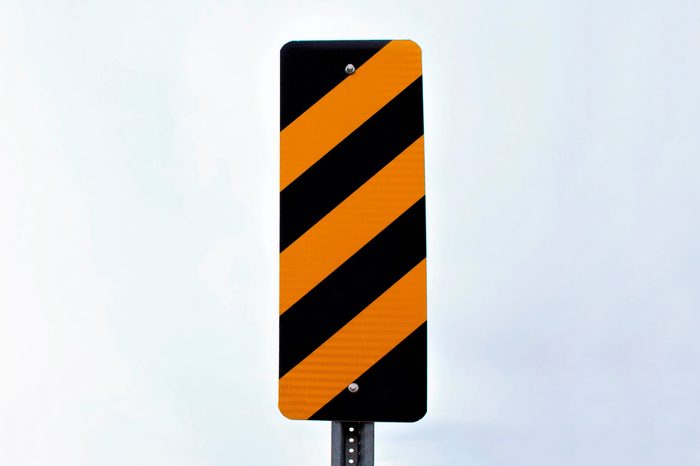
Object Marker
There are no words or hieroglyphs to instruct you here, and with its neon yellow stripes, this sign just sort of … wants your attention? Sometimes the diagonals slope to the left, sometimes to the right, alternating at whimsy, apparently. This is arguably the most confusing sign of the bunch because that assertion is exactly correct, this sign does just want your attention. As the MUTCD will tell you, this sign is just an object marker and will help improve your driving etiquette. The diagonals are sloped toward whichever direction traffic is supposed to skirt around. Use your words, object marker!
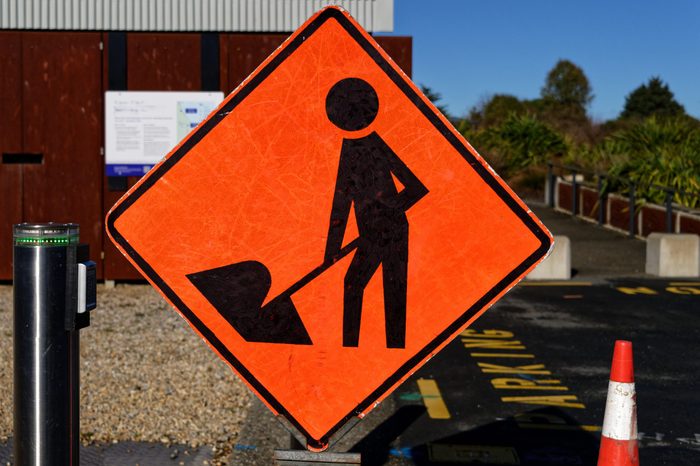
Workers Ahead
This sign is just to say that there are construction workers ahead, and you should approach with caution so everyone stays safe. They might not necessarily be shoveling, so it is a bit fictitious in that regard. Use your imagination.
About the expert
|
Why trust us
At Reader’s Digest, we’re committed to producing high-quality content by writers with expertise and experience in their field in consultation with relevant, qualified experts. We rely on reputable primary sources, including government and professional organizations and academic institutions as well as our writers’ personal experiences where appropriate. We verify all facts and data, back them with credible sourcing and revisit them over time to ensure they remain accurate and up to date. For this piece on confusing road signs, Caroline Fanning tapped her experience as a longtime journalist to ensure that all information is accurate and offers the best possible advice to readers. Read more about our team, our contributors and our editorial policies.
Sources:
- U.S. Department of Transportation: “Manual on Uniform Traffic Control Devices”
- John Svensson, former president of the Driving School Association of the Americas



















